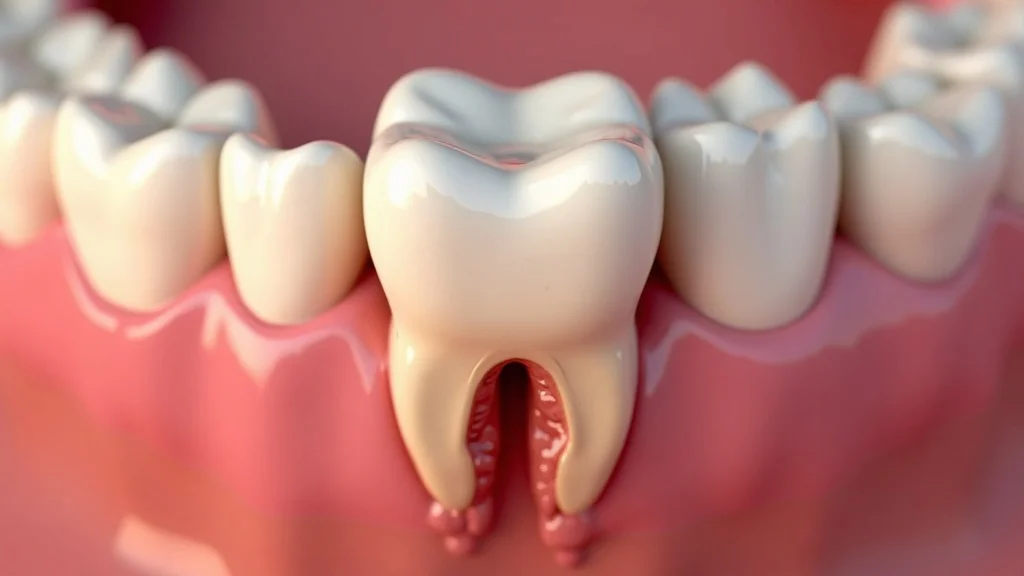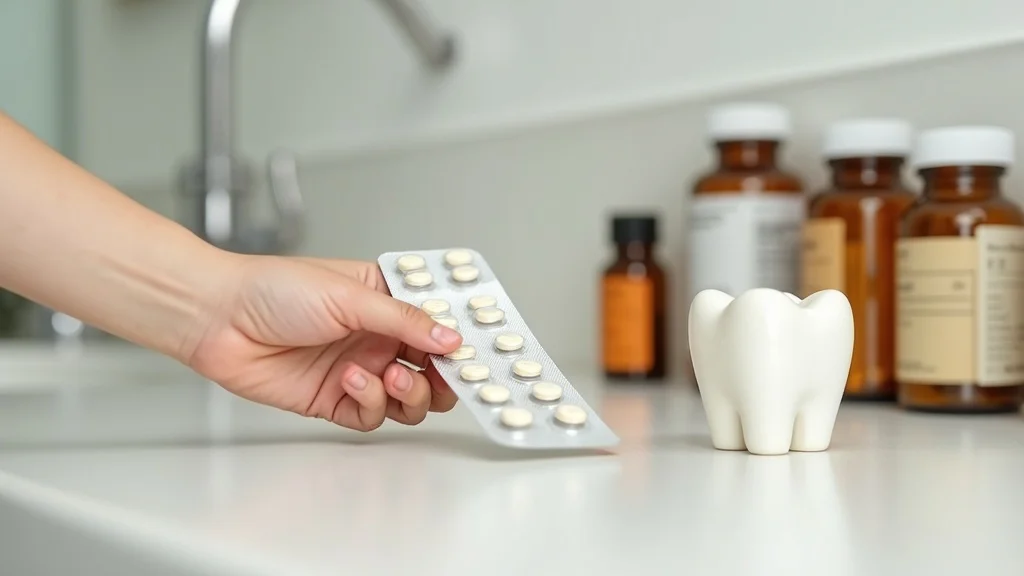Enduring tooth pain can feel isolating and overwhelming. But finding the real fix isn’t just about relief—it’s about reclaiming your comfort and confidence. Discover practical solutions that empower you to take control of your dental health and finally say goodbye to persistent tooth pain.

Understanding Tooth Pain: Causes and Impact on Dental Health
Tooth pain is more than an annoying sensation—it's a key signal from your body that something isn’t quite right in your mouth. For many, tooth pain can range from a mild irritation to a sharp, throbbing ache. But why does tooth pain occur? Typically, tooth pain results from the stimulation of nerve endings within a tooth’s sensitive pulp or the surrounding tissue, often caused by issues like tooth decay or gum disease.
These nerves can react to changes in pressure, temperature, or the presence of bacteria, frequently stemming from common dental problems like tooth decay or gum disease. Both conditions can expose or irritate the pulp inside your tooth, leading to pain and inflammation.
The relationship between tooth pain and your overall oral health runs deep. Persistent discomfort isn’t just a nuisance; it’s a warning that your dental health could be at risk. Unchecked, the initial pain caused by a cavity or minor gum irritation might escalate into more severe issues like infections or abscesses.
In extreme cases, untreated dental pain can impact your jaw, cause swelling, or complicate underlying health conditions. Addressing tooth pain promptly not only eases the immediate pain but also protects the long-term integrity of your teeth and gums, contributing to a healthier smile for years to come.
What is tooth pain and why does it occur?
Connection between tooth pain and oral health
How tooth decay and gum disease trigger tooth pain
Recognizing the Signs: From Sharp Pain to Persistent Discomfort
Tooth pain doesn’t always feel the same. You might notice sharp pain when biting down, a dull ache that lingers, or persistent throbbing that can keep you awake at night. Each type of discomfort can indicate a different dental problem: sharp, shooting pain may suggest a crack or acute cavity, while ongoing sensitivity might be tied to gum disease or enamel erosion. Recognizing these sharp pain patterns is crucial for deciding what steps to take next in managing your dental health.
So how do you know when it’s time to visit your dentist? Warning signs include swelling, pain that worsens instead of improving, or discomfort accompanied by fever and bad breath. Any pain that persists more than a day or two, makes eating difficult, or radiates into your jaw or ear should never be ignored. Tooth pain is considered an emergency if it’s accompanied by facial swelling, gum or jaw tenderness, or signs of infection—these require immediate professional attention to prevent serious complications.
Types of tooth pain: sharp pain, dull aches, throbbing
Symptoms indicating a dental professional is needed
When is tooth pain a dental emergency?

If your tooth pain is severe or lingers despite home care, it could be a sign of a deeper dental issue. In some cases, persistent discomfort may indicate the need for advanced treatment such as a root canal. To better understand when tooth pain signals something more serious, explore the key signs that your tooth pain could mean a root canal is needed and learn what to watch for before complications arise.
Common Causes of Tooth Pain: Decay, Gum Disease, and More
Most tooth pain begins with familiar culprits—chief among them, tooth decay. Tiny holes form in a tooth’s enamel when bacteria feed on leftover sugars, producing acids that weaken teeth. As the decay progresses, it can reach the nerve-rich pulp inside your tooth, causing pain and inflammation. Gum disease, another common offender, develops when poor oral hygiene leads to plaque buildup. This plaque irritates the gums and can eventually expose the tooth root, making even gentle pressure unbearably painful.
Other causes extend beyond decay and gum disease. Cracked or fractured teeth can lead to sudden sharp pain, especially when chewing. Tooth sensitivity, often the result of enamel wear or exposed roots, means even a sip of cold water can trigger discomfort.
Sometimes, tooth pain isn’t caused by a dental issue at all—sinus infections, for instance, can create pressure that radiates into the teeth, mimicking genuine dental pain. Understanding these causes underscores the importance of a thorough assessment by a dental professional, ensuring effective and safe management of your dental health.
Tooth decay and its impact on dental health
Gum disease and tooth pain
Other causes: cracked teeth, sensitivity, sinus infection

How Experts Like Cleveland Clinic Diagnose Tooth Pain
When tooth pain persists, a professional assessment is a must. The process typically starts with a dental professional reviewing your symptoms and medical history, followed by a detailed oral exam. Your dentist will look for visible signs of tooth decay, gum disease, or trauma. Palpation of the affected area and assessments of sensitivity help determine the pain’s source, be it the pulp inside the tooth, nearby gums, or surrounding tissue.
Diagnostic tools make a difference, too. The Cleveland Clinic and other leading dental institutions utilize advanced diagnostic tools like dental x-rays to detect hidden cavities, bone infections, or root issues that may not be visible during a standard exam. Sometimes, additional tests such as thermal sensitivity or percussion are applied to pinpoint the exact cause of discomfort. Early, expert evaluation ensures targeted treatment—reducing pain, avoiding complications, and preserving your long-term oral health.
Professional assessment: what to expect
Diagnostic tools: x-rays, oral exams
"Early evaluation by a dental professional can prevent small issues from becoming major sources of tooth pain."
Immediate Relief for Tooth Pain: Effective Home Remedies
While waiting for professional care, several effective home remedies like clove oil and a warm water rinse can ease tooth pain and reduce inflammation safely. Clove oil is a time-tested favorite: a swab placed gently on the affected area can offer temporary numbing and antibacterial benefits. A warm water rinse or saltwater rinse helps to cleanse the mouth and reduce tooth pain, making it easier to eat and talk until you can visit your dental professional. For those seeking a mild disinfectant, a diluted hydrogen peroxide rinse may help, but it must be used cautiously to avoid irritation.
Using a cold compress is another reliable way to relieve acute pain and control swelling. Place a wrapped ice pack or cold cloth over your cheek near the sore tooth for 15 minutes at a time. This helps to constrict blood vessels, numbing the site and dulling the sensation. Remember, while these home remedies may provide short-term comfort, they’re not substitutes for a true dental diagnosis and should never be used as the only solution for ongoing pain.
Clove oil’s proven effectiveness for tooth pain
Water rinse and saltwater rinse for soothing discomfort
Using hydrogen peroxide safely for oral health
Cold compress technique

Table: Comparison of Home Remedies for Tooth Pain Relief
Remedy |
Effectiveness |
How to Use |
Precautions |
|---|---|---|---|
Clove Oil |
High |
Apply a drop on cotton swab to affected area |
Use sparingly to avoid irritation; not for young children |
Saltwater Rinse |
Medium |
Mix ½ tsp salt in warm water, rinse mouth for 30 seconds |
Do not swallow; repeat as needed |
Hydrogen Peroxide Solution |
Medium |
Mix equal parts 3% peroxide and water, swish for 30 seconds |
Do not swallow; do not use too frequently |
Cold Compress |
Medium |
Apply wrapped ice pack outside cheek for 15 minutes |
Use intermittently to prevent skin damage |
Over-the-Counter and Prescription Options for Tooth Pain
For quick and convenient pain relief from tooth pain, over-the-counter (OTC) medications such as ibuprofen and acetaminophen are widely recommended by dental professionals. These painkillers ease tooth pain by reducing pain and inflammation both inside your tooth and in the surrounding tissue.
Always take as directed and avoid exceeding dosage guidelines, as misuse can lead to gastrointestinal upset or other risks. Topical gels containing benzocaine offer temporary numbing but should be used with caution, especially in children.
Sometimes, tooth pain requires more than OTC relief. If pain persists for several days or is accompanied by major swelling, a dental professional may prescribe stronger medications or antibiotics—particularly if there’s infection present. Prescription options are generally reserved for severe cases, and only a dentist can determine whether you need them. Remember, self-medicating for ongoing pain rarely addresses the cause. Seek a dentist’s advice if OTC remedies aren’t enough.
Best painkillers for a toothache
Risks and benefits of OTC medications
When to seek a prescription for dental treatment

When to Seek a Dental Professional for Persistent Tooth Pain
Persistent tooth pain is your body’s way of signaling that you need a dental professional’s expert help. You should see a dentist if your pain lasts more than 48 hours, increases in severity, or is accompanied by swelling, fever, or difficulty swallowing. Such symptoms can indicate deep infection or abscess, requiring immediate dental treatment to prevent complications. The Cleveland Clinic underscores that untreated pain may lead to more serious dental problems, impacting your oral health and even your general wellbeing.
A dental professional’s role goes far beyond relief—they diagnose the true source of your pain, deliver root canal treatment or minor repairs as needed, and provide a plan to restore your dental health. Don’t wait for tooth pain to disrupt your daily life—prompt evaluation is the key to stopping problems before they escalate. Trust your instincts, and seek help if dental pain becomes more than a mild annoyance.
Signs it’s time to see a dentist
The role of a dental professional in dental health management
Cleveland Clinic advice on treatment timing
Preventing Tooth Pain: Building a Foundation for Lifelong Dental Health
Prevention is always better than cure when it comes to tooth pain. Daily oral health habits—such as brushing twice a day with fluoride toothpaste, flossing, and limiting sugary snacks—form the cornerstone of preventing tooth decay and maintaining lasting dental health. Good hygiene reduces the bacteria that cause tooth decay and gum disease, preventing painful issues before they happen.
It’s not just about cleaning, though. A diet rich in crunchy fruits, vegetables, and dairy can help strengthen enamel and support gum health. Regular dental visits ensure that small dental problems are caught early, before they cause sharp pain or persistent aches. Remember, the best defense against tooth pain is a proactive approach: prioritize regular checkups and invest in your daily oral routine for lasting comfort and health.
Daily oral health habits
Diet and nutrition for preventing tooth decay and gum disease
Regular dental professional visits

"Prevention is the most powerful solution to chronic tooth pain—consistent oral care can spare you from future discomfort."
Debunking Myths: What Really Works for Tooth Pain
With so much advice available online, it’s easy to get confused about what really helps with tooth pain. Some home remedies offer real relief, but others may do more harm than good. For instance, clove oil and warm water rinse have proven track records for easing tooth pain, while placing aspirin directly on gums can burn tissue and should be avoided. Hydrogen peroxide, when diluted and used carefully, may provide limited benefits, but excessive use risks irritation or harm.
Don’t fall for the myth that all home remedies are safe or that tooth pain always goes away without care. Ignoring persistent pain or relying solely on internet solutions can lead to consequences—sometimes the need for root canal treatment or even an emergency room visit. When in doubt, consult your dental professional for evidence-based advice and solutions that protect your oral health.
Home remedies: what to avoid and what helps
Myths vs. facts: impact of hydrogen peroxide, clove oil, and water rinse

Early intervention by a dentist can help identify the cause of your pain and prevent further damage. Timely treatment not only relieves discomfort but also preserves your oral health and can save you from more extensive — and costly — procedures down the line. Ignoring a toothache may result in tooth loss or serious health risks, so it’s always best to seek professional dental care as soon as possible.
Answering Your Most Common Tooth Pain Questions
What do you do when your tooth hurts really bad?
Start by rinsing your mouth with warm water to clean it and ease discomfort.
Apply a cold compress to the outside of your cheek over the affected area to reduce pain and swelling.
Avoid putting aspirin directly on gums—the best painkillers for a toothache are ibuprofen or acetaminophen, taken according to package directions.
If swelling, severe pain, or fever occurs, contact your dental professional promptly. Persistent or severe toothache pain may require urgent dental treatment.

What is the 3-3-3 rule for toothache?
The 3-3-3 rule suggests taking 3 ibuprofen tablets (usually 200mg each), three times a day, for three days to reduce pain and inflammation.
This method may help temporarily, but it is not a cure for tooth pain. Always follow medication instructions or consult a dental professional if you’re unsure or if pain persists.
What is the best painkiller for a toothache?
Ibuprofen or acetaminophen are typically the most effective OTC options for relieving tooth pain and reducing inflammation.
Always take painkillers according to package instructions. Never exceed recommended doses, and consult your doctor or dentist if you have other medical conditions or take different medications.
Can tooth pain heal on its own?
Some causes of tooth pain, such as mild irritation or temporary sensitivity, may improve with careful home care and oral hygiene.
However, most toothaches linked to tooth decay, gum disease, or infection require dental treatment to heal fully. Do not ignore pain that lasts more than a couple of days—visit your dentist for a professional assessment.
-

FAQ: Your Tooth Pain and Dental Health Questions Answered
Can tooth pain be a sign of something serious?
Yes. Persistent tooth pain can signal infection, abscess, or underlying dental problems requiring urgent treatment. Always seek dental advice for ongoing or severe pain.Is it safe to use hydrogen peroxide for tooth pain?
When diluted and used as a short-term rinse, hydrogen peroxide can help clean your mouth. Never swallow, and don’t use too often to avoid irritation.Can gum disease cause persistent tooth pain?
Absolutely. Gum disease can expose tooth roots and create inflammation, leading to ongoing tooth pain and sensitivity.Are there natural remedies that actually work for tooth pain?
Some natural remedies, like clove oil and a saltwater rinse, can provide temporary relief from tooth pain. But these are not substitutes for a dental professional’s expertise if pain continues.
Key Takeaways: Taking Charge of Tooth Pain and Dental Health
Don’t ignore persistent tooth pain—seek professional care.
Home remedies like clove oil and warm water rinse can offer temporary relief.
Prevention remains the cornerstone of lasting dental health.

Ready for Relief? Schedule Your Consultation for Expert Tooth Pain Treatment Now
Take the next step to reclaim your comfort and dental health. Book a professional dental appointment today and get a personalized plan for overcoming tooth pain—for good.
If you’re committed to improving your overall well-being, understanding how oral health connects to broader health issues is a smart next step. Many hidden conditions can impact your quality of life without obvious symptoms, just as tooth pain can signal deeper dental concerns. For a more holistic approach to your health, discover what most women don’t know about underlying health conditions by reading this essential guide to hidden health issues. Expanding your knowledge empowers you to take proactive steps—not just for your teeth, but for your entire body.
Sources
To further enhance your understanding of tooth pain and its management, consider exploring the following authoritative resources:
The American Association of Endodontists provides a comprehensive overview in their article, “Tooth Pain,” detailing common symptoms, potential causes, and initial steps to alleviate discomfort.
The Mayo Clinic offers practical advice in their guide, “Toothache: First aid,” outlining immediate actions to take when experiencing a toothache and when to seek professional care.
These resources will provide you with valuable insights and guidance. NCWellnessHub.com
 Add Row
Add Row  Add
Add 




Write A Comment